Something remarkable is happening at Nora Forester Elementary School in San Antonio, Texas, in teacher Patrice Bravo’s STEM lab — a wonderland of technicolor gears, tools and laboratory doo-dads, all overseen by STEM’s playful patron saint: Albert Einstein, poking out his tongue from a poster on the back wall.
“If the wind is going against your hand, what’s your hand going to do?” Bravo asks, blowing dramatically against her open, upright hand. Today’s lesson: aerodynamics.
“The wind is strong! It makes your hand go ‘Whoa!,’ like this.” Her hand quivers like a sail. “But! If your hand is like this,” she asks, pointing it into the wind, “like an airplane wing?”
The second-graders giggle and chirp their predictions.
Bravo asks student Christopher Olivarez to help by being the wind, and together they perform a playful duet between wind and wing, student and teacher.
This is the remarkable part. While Christopher is a student, he is taller than the other second-graders, his voice deeper. Because he’s actually a ninth-grader — part of a brand new high school, just a couple miles away, for teens who are interested in becoming teachers.
At a time when school districts across the U.S. are struggling with teacher shortages, including Bravo’s own Northside Independent School District in and around San Antonio, Christopher represents many things in addition to the wind: a bold experiment, an expensive risk, a glimmer of hope.
Society has taken teachers for granted, and ‘now that is falling apart’
According to limited federal data, as of October, 45% of public schools in the U.S. had at least one teacher vacancy. For several months, NPR has been exploring the forces at work behind these local teacher shortages. Interviews with more than 70 experts and educators across the country, including teachers both aspiring and retiring, offer several explanations.
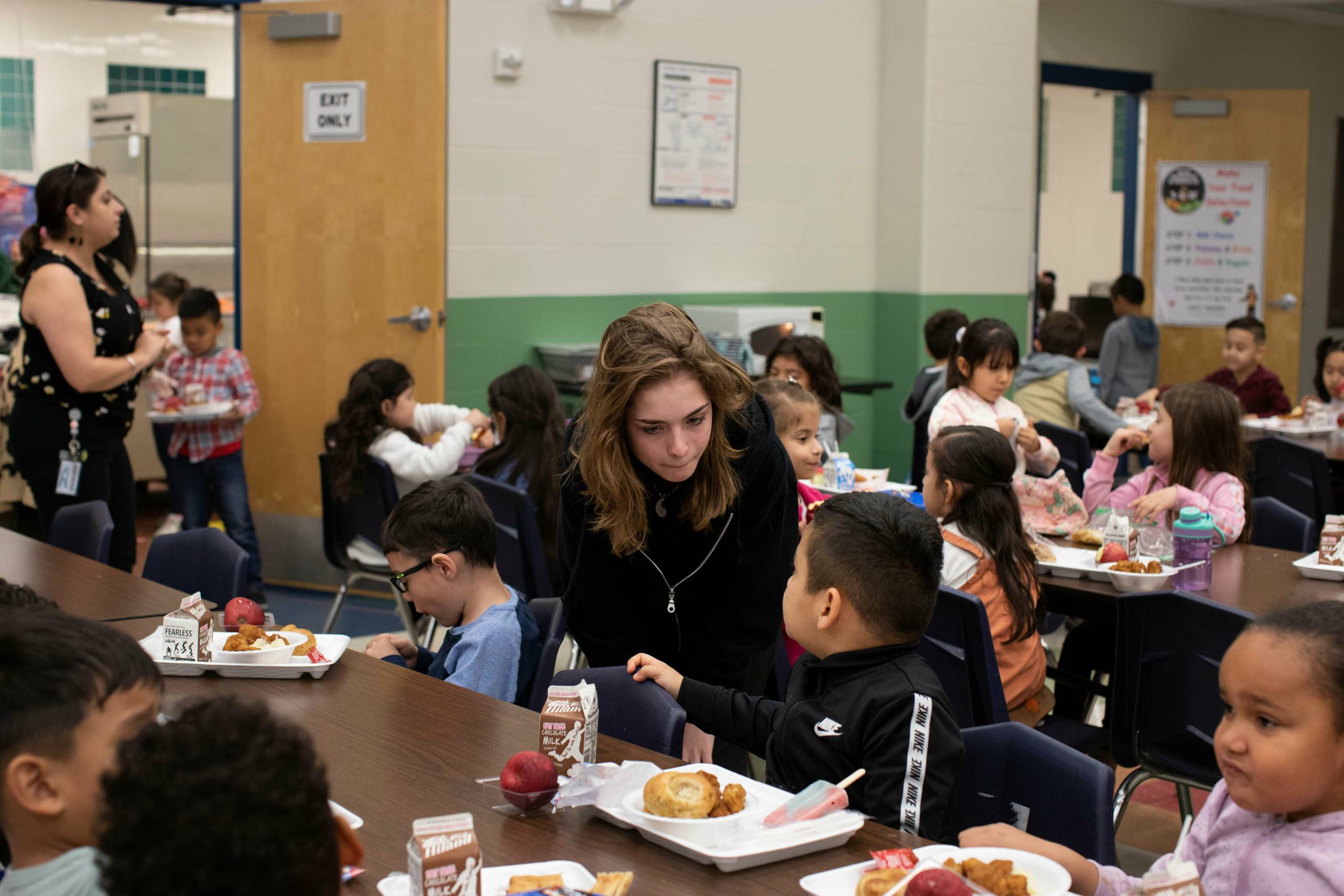
For nearly a decade, fewer people have been going to school to become teachers; pay remains low in many places; and, with unemployment also low, some could-be teachers have chosen more lucrative work elsewhere. Researchers and educators also point to a cultural undertow pulling at the profession: a long decline in Americans’ esteem for teaching.
Many districts are now racing to bolster the traditional, college-level teacher-training pipeline that has, over the past decade, failed to produce enough educators to meet schools’ increasing demands. In Mississippi, a so-called Grow Your Own Program has helped Jackson schools provide no-cost master’s degrees to aspiring, local teachers, and is now playing a critical role in tending hard-to-staff classrooms across the district.
In San Antonio, and in Bravo’s classroom, the plan at work is less conventional. The idea of a teacher training program for high-schoolers like Christopher Olivarez isn’t unique to Northside, but because of its implicit longview — it’ll be at least another seven years before the current ninth-graders become full-fledged teachers, assuming they stick with the profession — it’s less common and, in the short-term, less helpful to districts with immediate staffing gaps.
Northside Superintendent Brian Woods says, when the idea of creating a high school for aspiring teachers first came up, there was no teacher shortage. The purpose was to raise the profile of teaching and to eventually help staff Northside schools with Northside graduates.
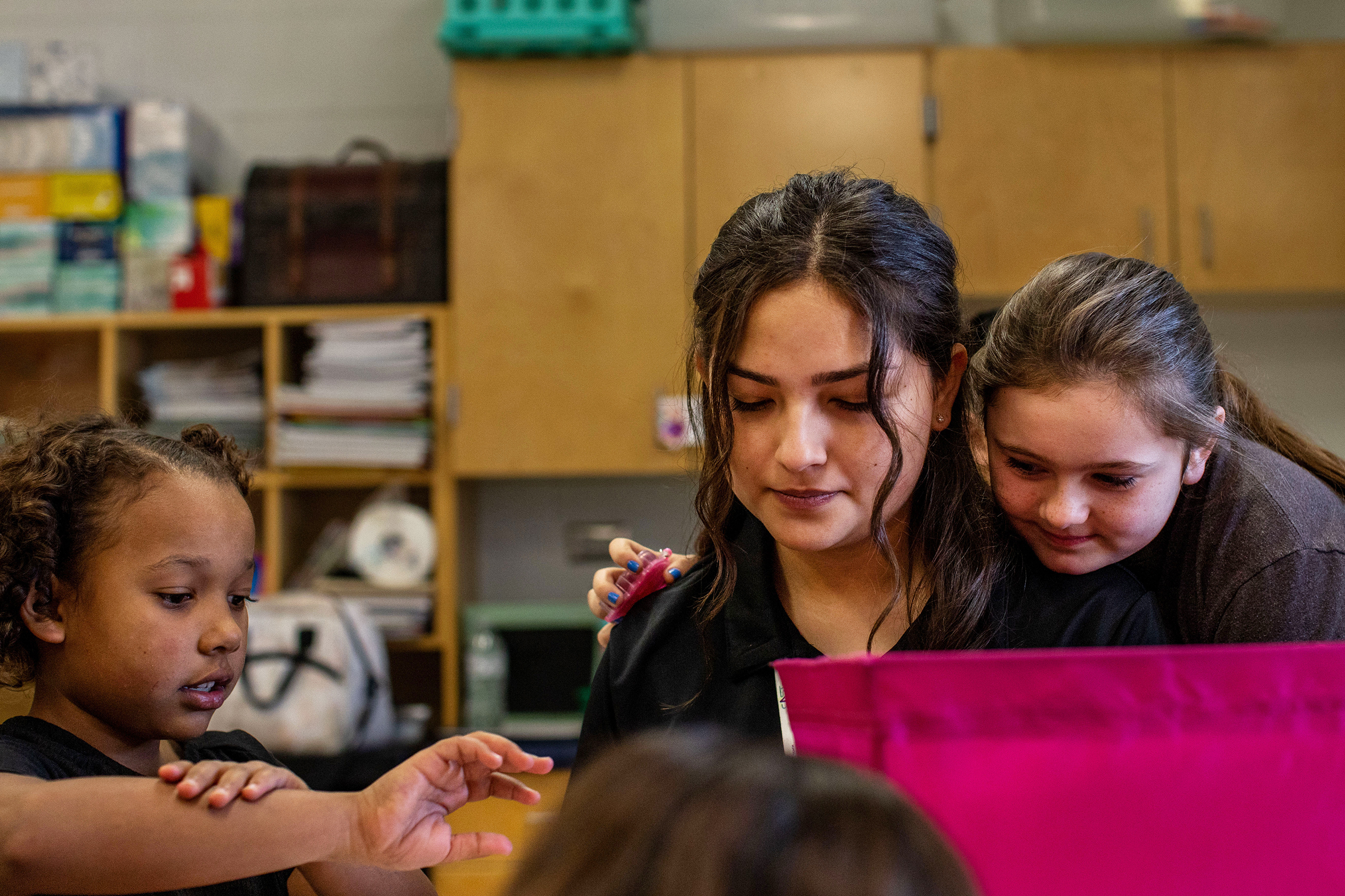
“I cannot recall a year, and I’ve been here over 30, where we began a school year with any vacancies. Zero,” he says.
That changed recently, though. This school year, Woods had to fill around 200 vacancies — in a district with roughly 7,000 classroom teachers.
“We have taken for granted that people of mission and faith will come to public schools. And they largely have. And now that is falling apart,” Woods warns.
How to pitch the teaching profession to middle schoolers
The CAST Teach High School is a partnership between the University of Texas at San Antonio, the Northside Independent School District, which serves big chunks of the city, and the CAST Schools Network, a nonprofit behind several career-focused, San Antonio high schools. And it is a labor of love for veteran teacher Ericka Olivarez.
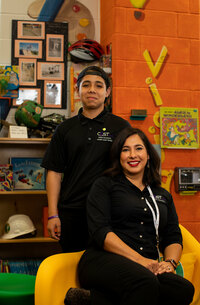
Olivarez is the school’s founding principal and the new program’s emotional engine. Last year, she traveled the district’s middle schools, trying to recruit her very first freshman class.
“‘Come and enjoy a career in education!'” she remembers telling anyone who would listen. “‘Come and explore this possible field.’ And middle school kids were kinda like, ‘Meh, school.'”
So, Olivarez says, she changed her approach. “We started asking students, ‘What are you passionate about?’ ” If you love writing, or playing basketball, or video game design, she told them, those are all skills that someone is lucky enough to teach.
The pitch worked: 85 rising ninth-graders signed up.
This first year, they’ve done most of their learning in portable classrooms. Next year, though, they’ll have a brand new building. On a tour of the construction site, Olivarez points out what will be a fully operational early childhood classroom, including a window with two-way glass, so the high-schoolers can observe each other as well as other teachers working with the children.
Olivarez says too many new teachers quit because they didn’t get this kind of classroom experience until the end of college. The high-schoolers at CAST Teach, on the other hand, will be exposed to lots of classrooms and student age groups.
“We firmly believe that, when a student walks the graduation stage out of CAST Teach, they’re going to be better prepared than the vast majority of people we’re taking out of a college setting,” says Superintendent Woods.
These student teachers have a passion for the classroom
Back at Forester Elementary, several ninth-grade student teachers squeeze into the teacher’s lounge for pizza and chatter. There’s a lot of laughing, but also something more surprising from a bunch of teenagers: a passion for the classroom.
“I had an eighth-grade counselor who made the biggest impact on me,” says Jayanne Garza, who’s known as Miss J to her grade-schoolers. “More than words can express. And now I want to go into counseling, so I can do the same and pass on the knowledge that she gave me.”
Jayanne says, even though she chose to leave her friends to attend this new teaching high school, “I love it here. I love the work I’m doing. I love the teachers, just the environment, and just generally feeling like a family.”
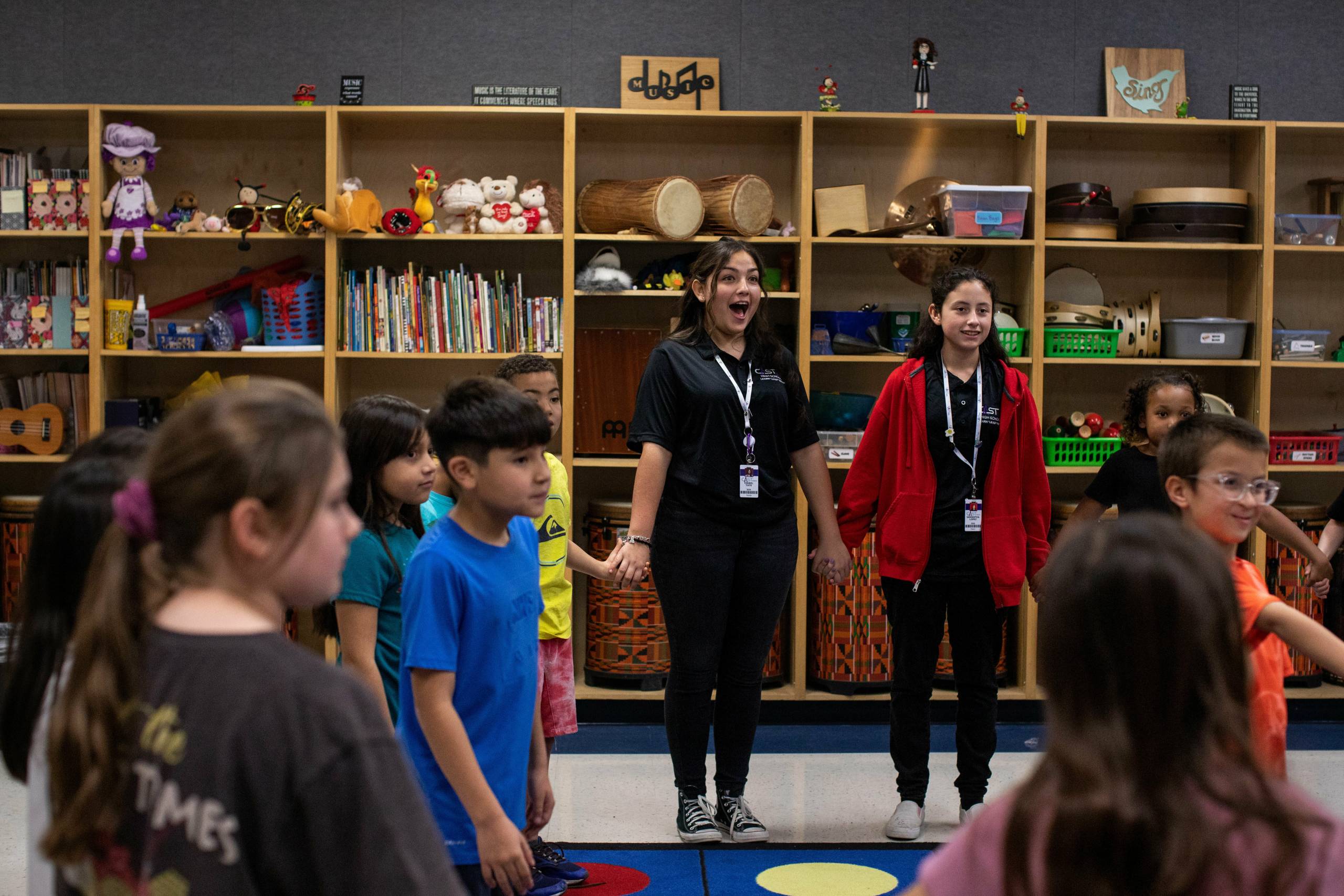
In the doorway of the lounge stands CAST Teach principal Ericka Olivarez, quietly crying. Christopher, from Mrs. Bravo’s STEM lab, is her son. He surprised his mother by enrolling in the program without even telling her. She didn’t need to recruit him, he says.
“She’s been teaching since obviously I was born. So I spent my mornings, my afternoons — all my time at school. My home was school,” Christopher says about hanging out in his mother’s classroom. Even outside of school, he can see the important role his mother has played in the lives of so many students.
“We’ll be in the middle of a store,” Christopher says, and regularly his mother’s former students will “come say ‘Hi’ to her and say, ‘Oh my God, you did this and this!’ I mean, just how much she changed their lives and how much she affected them.“
“I’m feeling a little emotional,” Ericka Olivarez says, listening to her son and his classmates talk about why they think they may want to teach. “When you start a project that’s never existed before and you’re trying something new, it’s really risky. And you know, you put a lot of your heart into that. It’s just, I’m very proud of them.”
Today’s experiment could be tomorrow’s solution
Back in Mrs. Bravo’s classroom, in a quiet moment between periods, Bravo reveals this is actually the second time she’s taught Christopher Olivarez. Long before he was her student teacher, he was here as a kindergartener.
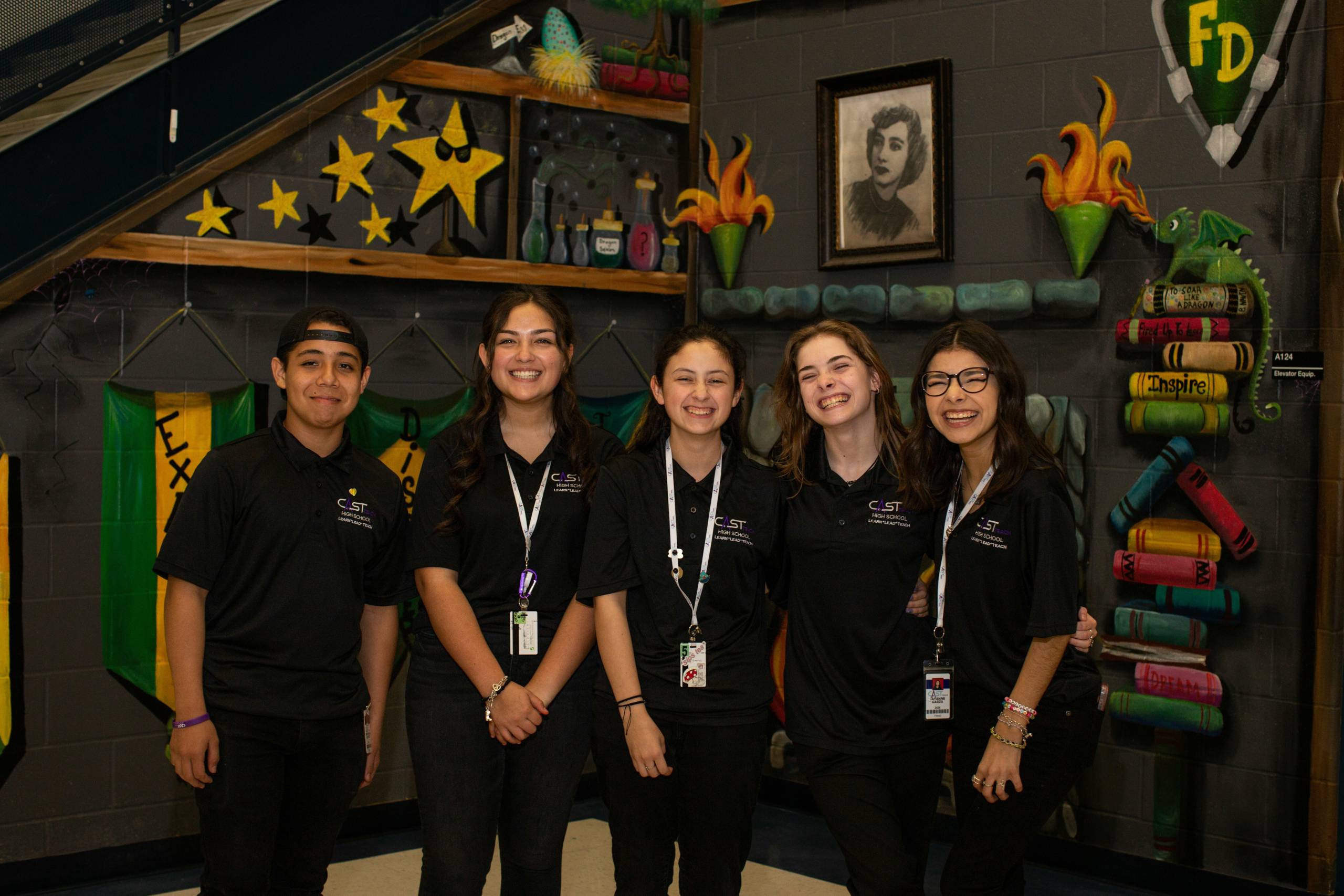
“I remember where he sat. He was close to the door, ’cause he was actually really quiet in school,” Bravo says.
As a new class of kids pours in, she pauses and smiles.
“That’s one of the things I love about teaching. It’s not just about telling kids things. It’s pulling out the best in them. And when I get to see it full-circle, teaching is one of the best careers.”
The district acknowledges this new teaching high school is still an experiment. But just as Mrs. Bravo watched Christopher grow from a quiet kindergartener into a confident, hands-on student teacher, so too may today’s experiment grow into tomorrow’s solution.
Copyright 2023 NPR. To see more, visit https://www.npr.org.9(MDAxOTAwOTE4MDEyMTkxMDAzNjczZDljZA004))